The Peanuts card game goes but many names: Nerts, Nertz, Pounce, Nuts, Racing Demon, Grouch and Squeal. We’re going to stick with the Peanuts name as I think it’s the one that sounds the most fun. No matter what you call it, Peanuts is fast moving game for 2 or more. It looks complicated at first, but if you’ve ever played solitaire, you’ll see how easy it is.
Peanuts joins our list of kid favorites such as Crazy Fish (nothing like Go Fish), Go to Pack, Kings Market and Fe Fi Fo Fum.
Despite the amount of names this game has, there are very few rules changes and variations. In his post we’ll cover how to play, ho w to set up, rules and vibrations for Peanuts.
This post may contain affiliate links. I receive a small commission at no cost to you when you make a purchase using my link.
What You Need for the Peanuts Card Game
You will need one deck of cards for each player. The deck will need to be all different so you can tell whose cards are whose. The jokers are removed from all decks. If you need some new playing cards, shop here. Canadians here. You will also need quite a bit of table space.
Object of Peanuts
The overall goal of Peanuts is to gain points by placing cards in the center foundation piles to get to 150 points.
Setting Up Peanut Card Game
To start, each player shuffles their cards and then makes a facedown pile of 13 cards. These cards are their peanuts. The top card is flipped over so you can see its face. Next, each player flips over four cards from their decks and places them face up in a horizontal line beside the peanuts stack. These cards are their building piles. Now they’re ready to play.
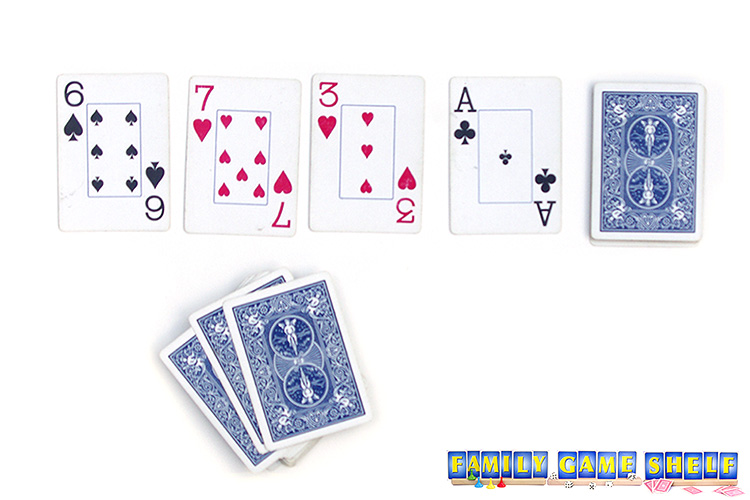
Playing the Peanuts Card Game
When everyone is ready, someone says go. Now, each player flips over the top card of their peanuts pile. Any ace can be placed in the middle or the common area to start a foundation pile.
The foundation piles can be added to in ascending order based on suit. For example, if there is an ace of spades, the 2 of spades can be placed on it and then the tree of spades. There can be more than one foundation pile of a suit. For example, if two players have an ace of hearts, they both may place them in the common area as foundational piles.
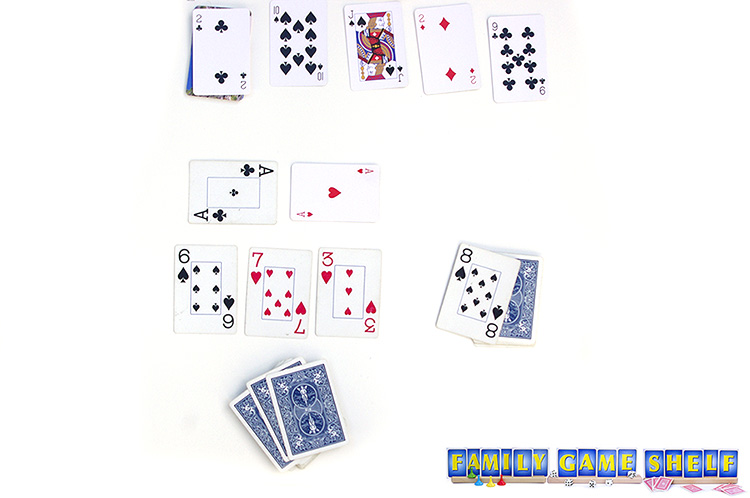
A player may place cards on their building piles in the red black order in descending order. That is, if a player has the king of clubs as the start of his building pile. She can place a red queen on it and then a black jack. If a player has a building pile that can be moved as a whole stack to another building pile, they may do so as long as it follows the red black order and is the whole stack. For example, if the bottom card of a pile is the 8 of spades and the beginning of another pile is the 7 of hearts, she can move the 7 and all other cards on it to the red. She now has an open spot and can fill it with any card she likes.
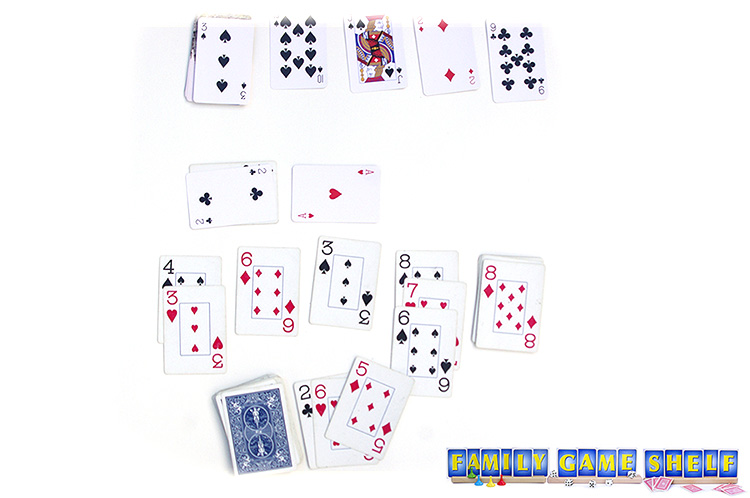
Playing
To start, a player can move any card to either the middle foundation piles or their own building piles. If nothing is moveable, or they wish not to play a card, then they take the top three cards off their deck and flip it over so they can only see the third card. He may now place that card anywhere it fits. If he does that, he may take the next card and place it anywhere it fits.
Next, he will take the next three cards off the deck and flip them over and continue until the deck has no more cards. At this time, he can pick up the discard stack, turn them over and continue flipping three cards over in usual solitaire style.
All players play at the same time and all are trying to use as many cards from their peanuts pile and put as many cards as they can on the foundation piles in the middle. It is a race.
When a foundation pile reaches the king of its suit, it can be placed to the side. A player does not have to play a card if he does not wish to.
If all players are stuck – that is there are no more moveable cards—then each layer takes the top card of their deck and places at the bottom on the deck and play continues.
No More Peanuts
When a player uses all of their cards in their peanuts pile, she can continue placing card in the center foundation piles as long as she would like. When she is ready, she calls peanuts and the play stops and scoring starts.

Scoring
A player scores one point for each card in a foundation pile. If a player has any cards left in his peanut pile, then 2 points for every card is subtracted from the score. For example if he has 27 points from the foundational piles and has 3 peanuts left, is score is 27 – (3 x 2) or 27 – 6 for a score of 21.
Scores are noted and the cards are sorted. It is important that each player give their cards a really good shuffle. Next, each player will set up their area as before with 13 peanuts and 4 building piles. When everyone is ready, someone says go and the game starts again.
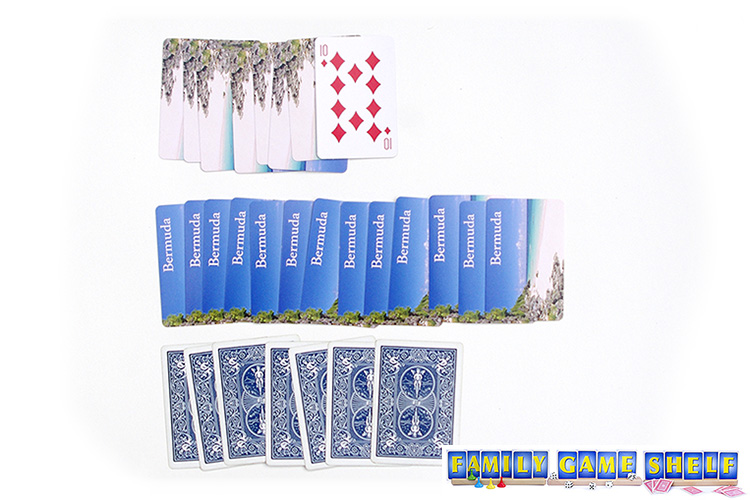
Winning the Peanuts Card Game
The first player to reach 150 points is the winner. If more than one player reaches 150 points in the same turn, the player with the higher score wins.
Nerts, Pounce and More
Although this game has many names, the rules are almost all the same. Of course when playing Nerts the Peanuts pile is the Nerts pile or the Pounce pile if playing Pounce. I found one source that says that Racing Demon is the oldest of all the names. The peanut pile is called the “off-pile” in this variation.
For rule changes, I was able to find the following:
For a shorter game, you can play until someone reaches 100 points.
When all players are stuck, then play stops and the score is added up. This could produce a player with a negative score.
Fast Moving Fun
The Peanuts card game is full of fast action, no matter what name you play by. You can play with just two players or as many as you have space and cards for. With simple game play and quick decisions, this is sure to be a family favorite.
For more fun with cards try Go Boom, Kings in the Corner and Slapjack. Be sure to visit our Family Game Shelf shop where you’ll find tons of seasonal and original games including our Whacky Putt dice mini golf game—sure to bring a smile to your face. You can also get the printable rules for Peanuts.



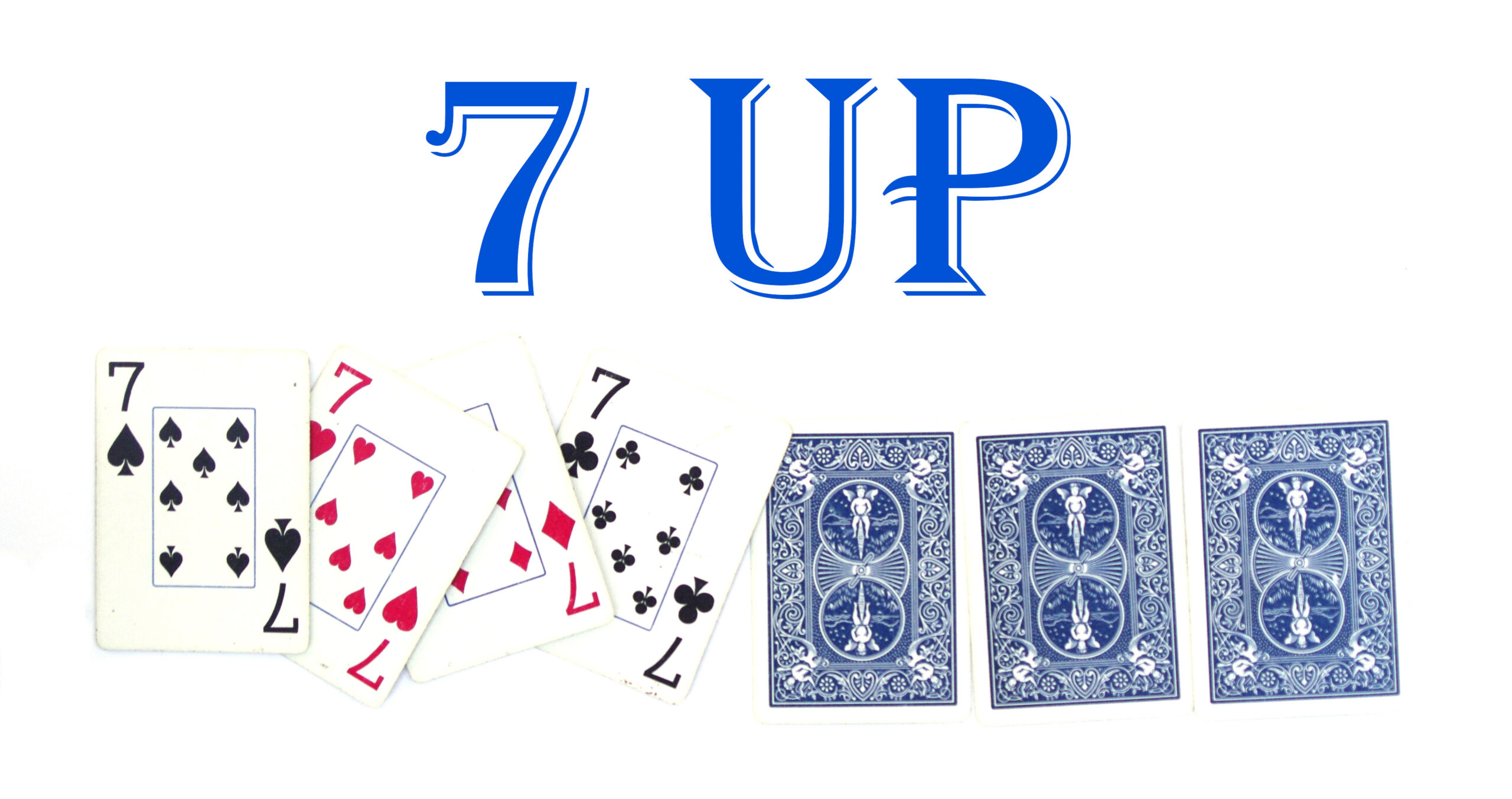
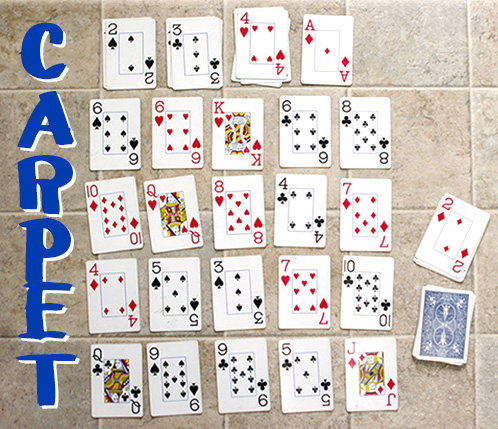

Be the first to reply